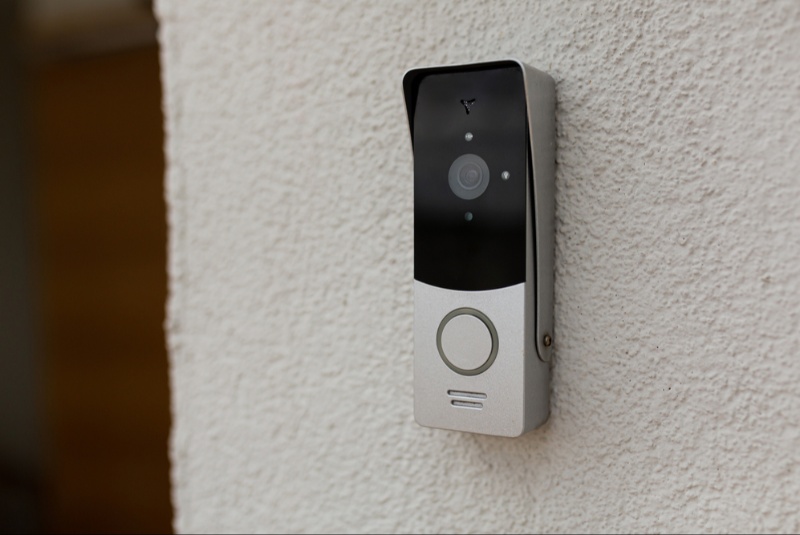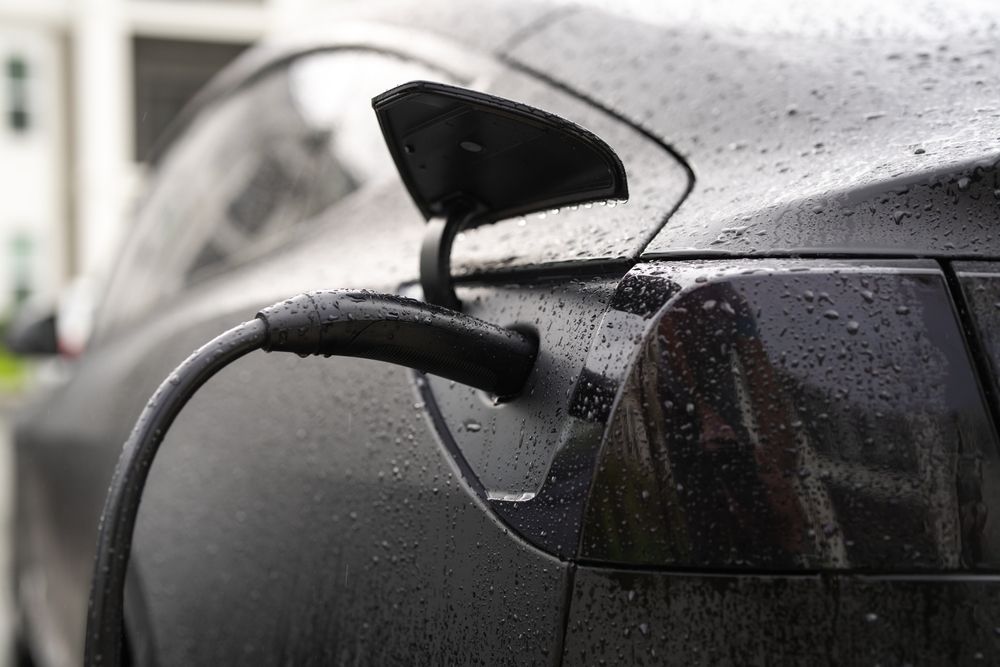We've come a long way from the traditional doorbells that simply chimed when visitors arrived. Today's smart doorbells offer a range of features from video capabilities to AI-driven facial recognition. With these advancements, however, comes the challenge of choosing the best fit for your needs. This comprehensive guide provides a step-by-step approach to navigating the world of smart doorbells, ensuring you make an informed choice that elevates the security and convenience of your home.
1. Understand the Basics
Before diving into specific models, it's crucial to understand the core functions of a smart doorbell. These features form the foundation of what makes a smart doorbell "smart."
Video Capability: Most smart doorbells are equipped with a camera that provides a live feed of your doorstep. When evaluating video capabilities, consider factors like resolution, field of view, and night vision capabilities. A higher resolution (1080p is ideal) ensures clarity, while a wider field of view covers more of the surrounding area. Night vision is essential for monitoring your doorstep in low-light conditions or at night.
Two-Way Communication: Smart doorbells allow you to interact with visitors without opening the door. This feature is valuable for greeting guests, communicating with delivery personnel, or even deterring potential intruders.
Motion Detection: Motion sensors in smart doorbells detect movement around your front door and send alerts, even if no one presses the doorbell. This capability enhances security by providing early warning of activity near your home.
Understanding these fundamental functions sets the stage for a more informed decision when choosing a smart doorbell that aligns with your needs.
2. Evaluate Your Home's Compatibility
While most modern homes can easily integrate with smart doorbells, older homes might require some adjustments to ensure seamless compatibility.
Wi-Fi: A stable and strong Wi-Fi connection is a fundamental requirement for smart doorbells to function effectively. Assess the proximity of your doorbell to your Wi-Fi router. If your doorbell is far from the router, consider investing in a Wi-Fi extender to ensure a reliable connection. A robust Wi-Fi signal is crucial for uninterrupted video streaming and real-time alerts.
Power Source: Smart doorbells can be powered in different ways, and it's essential to understand your current setup before selecting a model:
- Existing Wiring: Some doorbells work with existing wiring, which is commonly found in older homes with traditional doorbell systems. These wired doorbells typically draw power from your home's electrical system, eliminating the need for battery replacements.
- Battery-Powered: Other smart doorbells are battery-powered, making them suitable for homes without existing wiring. Battery-powered models offer flexibility in installation since they can be placed wherever needed without the constraints of wiring.
Integration with Other Smart Devices: If you already have a smart home ecosystem with devices like smart locks, smart lights, or a voice assistant like Amazon Alexa or Google Assistant, ensure that your chosen smart doorbell is compatible. For example, Ring doorbells seamlessly integrate with Amazon Alexa, allowing you to control and monitor your doorbell through voice commands.
Evaluating your home's compatibility ensures a smooth integration process and maximizes the benefits of your smart doorbell within your existing setup.

3. Prioritize Your Must-Have Features
While smart doorbells offer a range of features, it's essential to prioritize those that align with your specific needs and preferences. Consider the following factors when determining your must-have features:
Video Quality: A high-resolution video feed ensures clarity and detailed footage. Look for smart doorbells with at least 1080p resolution to capture clear images and videos of visitors and activities at your doorstep.
Storage Options: Smart doorbells offer various storage options for recorded video footage:
- Cloud Storage: Some doorbells offer cloud storage, typically on a subscription basis. Cloud storage provides convenient access to your video history from anywhere with an internet connection.
- Local Storage: Other doorbells support local storage, often using microSD cards. Local storage provides control over your data and eliminates ongoing subscription costs.
- Hybrid Storage: Certain models offer both cloud and local storage options, giving you flexibility in how you manage your recorded footage.
Consider your preference for access, data security, and potential long-term costs when choosing a storage option.
AI Capabilities: Advanced smart doorbell models incorporate artificial intelligence (AI) features such as facial recognition or package detection. These capabilities enhance security and convenience. Facial recognition can identify familiar faces and provide customized alerts, while package detection notifies you when a package is delivered to your doorstep.
By prioritizing your must-have features, you can narrow down your options and focus on smart doorbells that offer the functionalities that matter most to you.
4. Consider Security and Privacy
While smart doorbells are designed to enhance security, they have faced scrutiny over privacy concerns. Protecting your data and maintaining a secure environment should be paramount. Consider the following security and privacy aspects when selecting a smart doorbell:
Data Encryption: Ensure that the smart doorbell model you choose encrypts data to protect it from potential hackers or unauthorized access. Data encryption is a fundamental security feature that safeguards your recorded footage and communication with the device.
Regular Updates: Manufacturers should provide frequent software updates to address vulnerabilities and enhance security. Regular updates are essential for keeping your smart doorbell protected against evolving threats. Check if the manufacturer has a history of providing timely updates for their devices.
Privacy Settings: You should have control over your footage and the level of monitoring you desire. Look for smart doorbells that offer robust privacy settings, allowing you to customize recording preferences. For example, you should be able to turn off recording when needed or define specific zones to monitor, preserving your privacy.
5. Think About the Installation Process
The installation process of a smart doorbell can vary significantly depending on the model. It's essential to consider whether you prefer a DIY installation or if you require professional assistance:
DIY vs. Professional Installation: Some smart doorbells are designed for easy DIY installation and come with clear instructions and mounting hardware. If you're comfortable with basic tools and technology setup, a DIY installation may be suitable for you. However, if you prefer professional installation to ensure precise placement and optimal performance, factor this into your budget and time constraints.
Mobile App: A user-friendly mobile app is crucial for managing and interacting with your smart doorbell. Read user reviews and seek insights into the app's interface and reliability. A well-designed app simplifies tasks like viewing live footage, receiving alerts, and adjusting settings. Ensure that the app is compatible with your smartphone's operating system (iOS or Android) for seamless integration.
6. Set a Budget and Stick to It
Smart doorbells come in a wide range of prices, from budget-friendly options to high-end models with advanced features. Setting a budget helps you narrow down your choices and ensures that you select a smart doorbell that not only meets your needs but also aligns with your financial constraints. It's important to remember that the most expensive model isn't necessarily the best fit for every home. Determine the features that matter most to you and find a smart doorbell that strikes the right balance between functionality and cost.
Selecting the right smart doorbell is more than just a technological choice; it's a decision that directly impacts the security and convenience of your home. With this comprehensive guide, you're equipped with the knowledge and insights needed to navigate the world of smart doorbells effectively.
Remember that a smart doorbell isn't just about buying a device; it's about investing in peace of mind. By understanding the basics, evaluating your home's compatibility, prioritizing must-have features, considering security and privacy, thinking about the installation process, setting a budget, reading reviews, testing the product, factoring in ongoing costs, and assessing after-purchase support, you can confidently select a smart doorbell that enhances your home's security and convenience.




